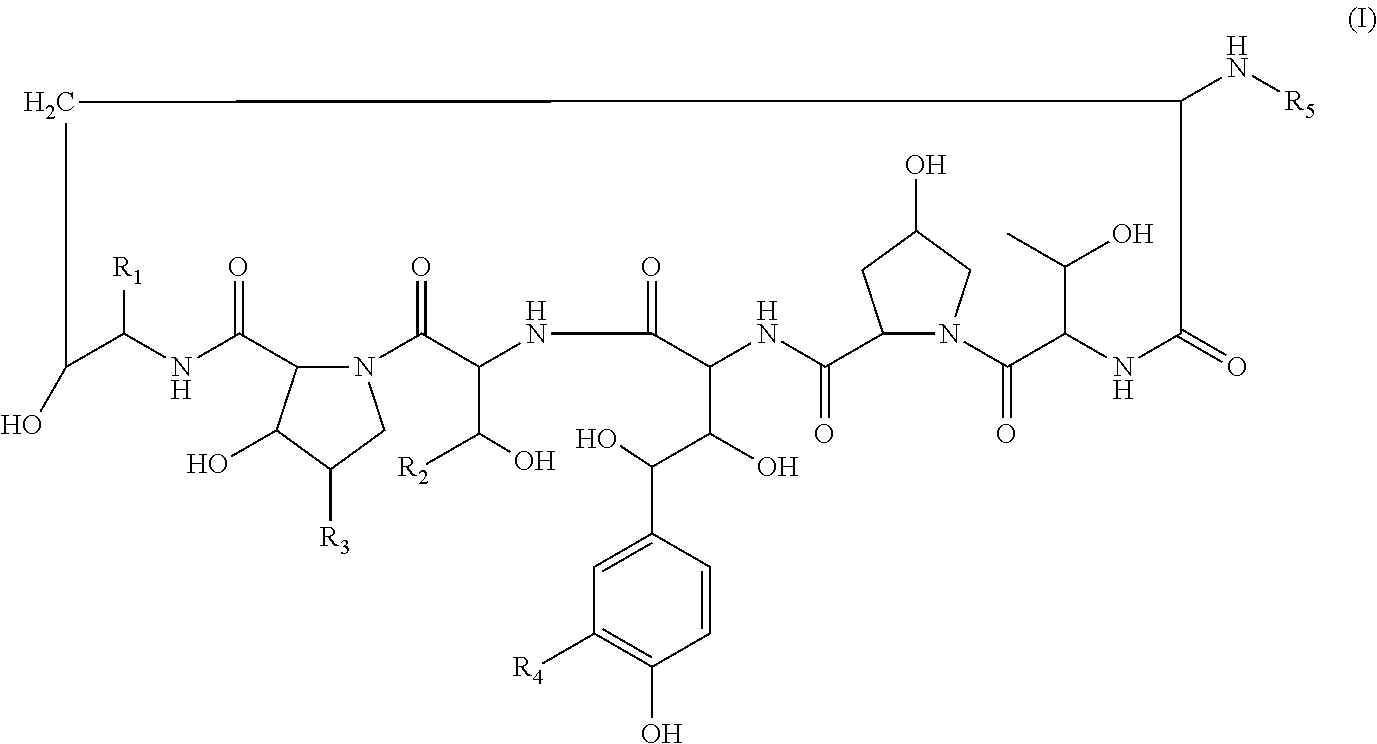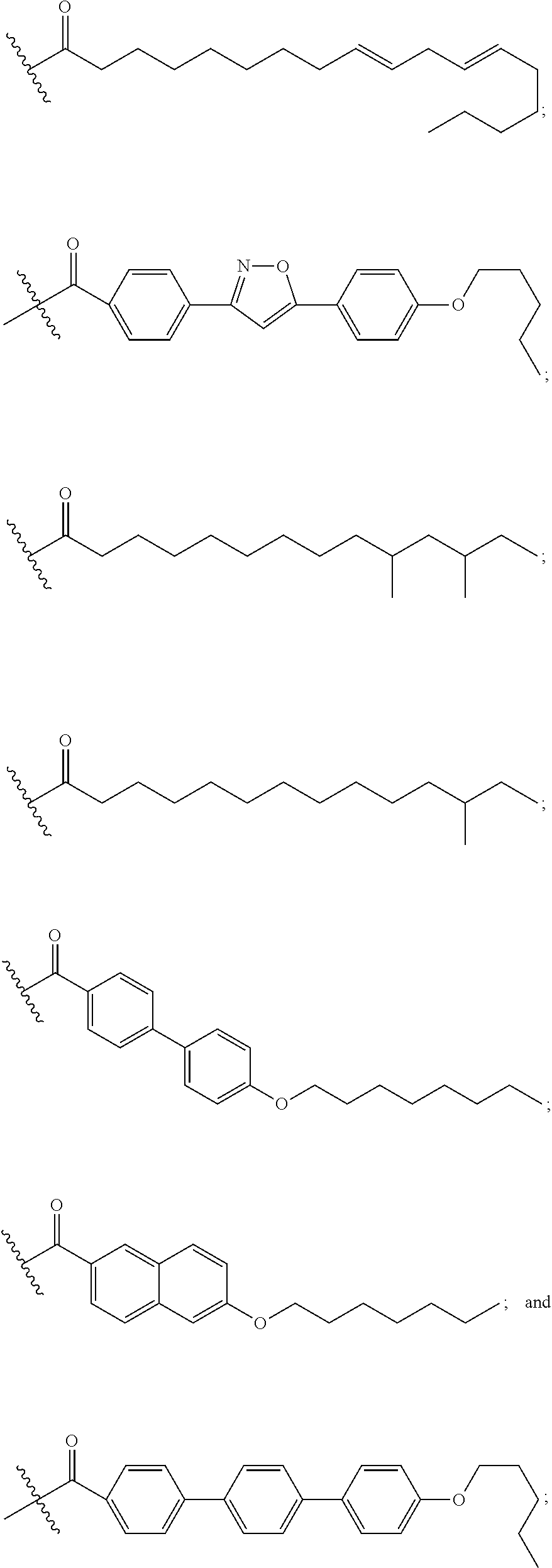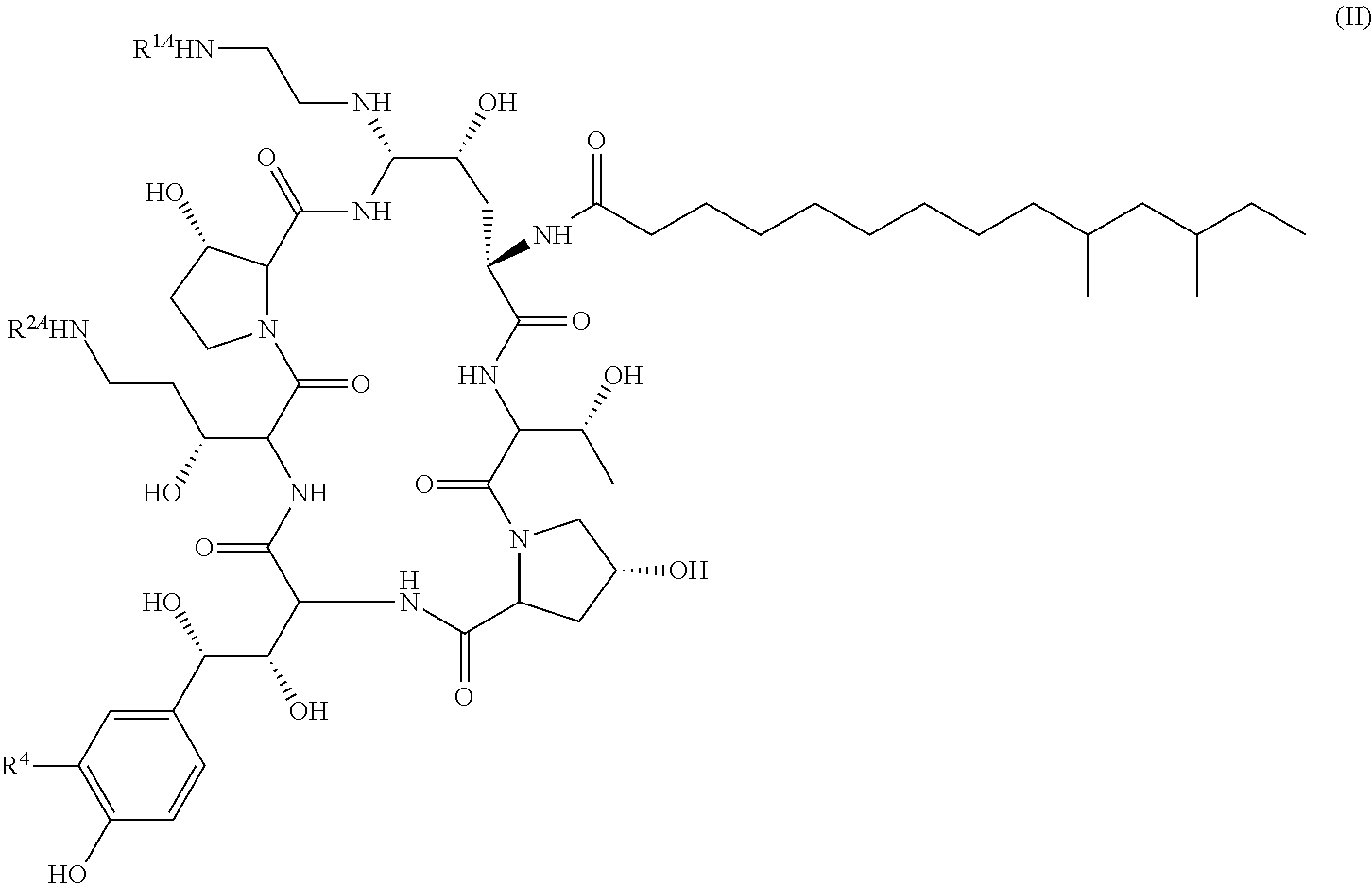Echinocandin derivatives
a technology of echinocandin and derivatives, which is applied in the field of echinocandin derivatives, can solve the problems of limited use, continuing challenges in the development of antifungal treatment regimens, and the greatest challenge of modern health care delivery, and achieve the effect of increasing oral bioavailability and greater oral bioavailability
- Summary
- Abstract
- Description
- Claims
- Application Information
AI Technical Summary
Benefits of technology
Problems solved by technology
Method used
Image
Examples
example 1
Synthesis of Compound MPEG7Hexyl Alcohol
[0086]
[0087]MPEG7hexyl succinimidyl ester (650 mg; 1.16 mmol) in 5 ml of diethyl ether under argon atmosphere was treated with LiBH4 (59 mg; 2.71 mmol). The mixture was stirred at room temp overnight. Solvent had evaporated and the mixture was reconstituted in dry THF. TLC [SiO2; 10% methanol / dichloromethane; KMnO4 detection] showed remaining starting material, and the reaction was treated with additional LiBH4 (approx. 50 mg; 2.3 mmol). The mixture was monitored by TLC and heated to reflux for approx. 4 hr until no starting material remained, and a single product was observed. The reaction was quenched by slow addition of saturated aqueous NaHCO3. Approx. 25 mL of dichloromethane was added and the mixture was separated. The organic phase was washed once each with approx. 25 ml of aq. NaHCO3 and brine then dried with MgSO4 and conc. in vacuo to give 441 mg (85% TY) of MPEG hexyl alcohol as a clear colorless oil.
example 2
Synthesis of Compounds 1 and 2
[0088]
[0089]Caspofungin acetate (10 mg; 0.008 mmol) in 0.5 mL THF was treated with 2-methoxyethanol-succinimidyl carbonate (175 μL, at 10 mg / mL in THF; 1.75 mg; 0.008 mmol). The resulting solution was stirred at ambient temperature for ca. 45 minutes and developed two major products and one minor product. The solution was concentrated in vacuo at room temperature, diluted with water, and the two major products were separated by preparative RP HPLC eluting with 0.05M CH3CO2−NH4+ (pH 5.0) / CH3CN. The purified products were isolated by freeze-drying to give white solids. The reaction was repeated until sufficient quantities of purified samples were accumulated, and the products were combined based on purity to give 7.9 mg of monoconjugate, compound 1, and 5.7 mg of diconjugate, compound 2. HPLC TR 9.92 min (84%); LC / MS, ESI+, m / z 598.3 [M+2H]+. HPLC TR 11.04 min (97%); LC / MS, ESI+, m / z 1297.7 [M+H]+, 660.3 [M+H+Na]2+
example 3
Synthesis of Compounds 3 and 4
[0090]
[0091]Caspofungin diacetate (15 mg; 0.012 mmol) dissolved in 0.5 mL THF and 4 drops of water was treated with MPEG7octyl succinimidyl ester (7.2 mg; 0.012 mmol). The resulting solution was stirred at ambient temperature for approximately 15 hr then concentrated in vacuo at room temperature and purified by preparative RP HPLC eluting with water (0.1% TFA) / CH3CN (0.1% TFA). Pure fractions of interest were freeze dried to provide 7.3 mg of monoconjugate, compound 3, and 4.7 mg of diconjugate, compound 4, as white solids: HPLC TR 10.38 min (95.2%); LC / MS, ESI+m / z 1557.9 [M+H]+, 779.5 [M+2H]2+, 527.3 [M+2H+Na]3±. HPLC TR 11.71 min (97%); LC / MS, ESI+m / z 1023 [M+H+Na]2+, 1034 [M+2Na]2±, 689.7 [M+H+2Na]3+.
PUM
| Property | Measurement | Unit |
|---|---|---|
| temperature | aaaaa | aaaaa |
| pH | aaaaa | aaaaa |
| temperature | aaaaa | aaaaa |
Abstract
Description
Claims
Application Information
 Login to View More
Login to View More - R&D
- Intellectual Property
- Life Sciences
- Materials
- Tech Scout
- Unparalleled Data Quality
- Higher Quality Content
- 60% Fewer Hallucinations
Browse by: Latest US Patents, China's latest patents, Technical Efficacy Thesaurus, Application Domain, Technology Topic, Popular Technical Reports.
© 2025 PatSnap. All rights reserved.Legal|Privacy policy|Modern Slavery Act Transparency Statement|Sitemap|About US| Contact US: help@patsnap.com



